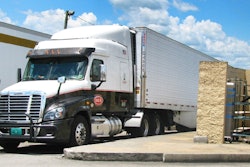
Cargo crime is no longer a problem confined to physical break-ins or rogue insiders. It has evolved into a sophisticated threat ecosystem where traditional theft intersects with cybercrime, organized fraud, and international criminal networks.
Estimated annual supply chain losses from fraud, intercepted shipments, and cargo theft have reached an eye-watering $15-35 billion according to data from the Homeland Security Investigations (HSI) agency. For today’s transportation leaders, understanding this complexity—and responding to it with a unified strategy—is no longer optional. It’s essential for survival in a high-risk logistics environment.
The spectrum of cargo crime now ranges from opportunistic pilferage to coordinated heists involving stolen identities, fake carriers, and manipulated telematics data. Increasingly, criminal organizations are targeting weak points in digital infrastructure—posing as legitimate brokers, intercepting sensitive shipment data, and using that intelligence to steal freight without ever setting foot near the loading dock.
In 2024 alone the industry saw a 27% increase in the number of reported cargo theft incidents over the previous year, according to CargoNet 2024 Supply Chain Risk Trends Analysis. While this is a significant increase, it unfortunately does not accurately represent the total scope of the issue as a significant number of incidents are not properly reported or investigated.
This evolution underscores a troubling reality: The transportation industry is now squarely in the crosshairs of cyber-enabled organized crime. The line between a cyber incident and a cargo theft event is increasingly blurred.
There is no silver bullet when it comes to solving the cargo crime epidemic, but the industry must align its response across the three interrelated spheres of responsibility.
Examples include, but are not limited to:
- Cybersecurity: Defend against account takeovers, identity theft, spoofed email communications, and data leaks that enable fraud and theft.
- Operational security: Verify trading partners and carrier identities, implement robust, consistent vetting procedures for all load assignments, and monitor for deviations in carrier behavior during dispatch, and have multiple verification methods and processes before any banking information is changed.
- Physical security: Use tamper-proof locks and tracking hardware, leverage geofencing and trailer immobilization technology, and partner with local law enforcement to monitor potential criminal activity in, or near, facilities and yards.
The cybersecurity controls that exist where these domains intersect hold the key to preventing cargo crime — cybersecurity controls support operational resilience, and physical safeguards often depend on cybersecurity systems or defenses to function securely and reliably. None of these practice areas can operate in a vacuum.
The cargo crime prevention ecosystem is vast and interconnected. Shippers, carriers, brokers, warehouse operators, technology vendors, insurers, regulators and law enforcement each hold a part of the solution — but no one entity holds all of it. For example, the complexities of the federal law enforcement system with its multiple agencies, task forces, and directives often self-limits its own effectiveness through unclear communication channels, competing priorities, and differences in prosecution thresholds. Add in those same nuances with state and local law enforcement — who are additionally hampered by jurisdictional limitations — and the issue becomes exponentially more complicated.
Effective prevention depends on synchronization of actions across many different entities. Cybersecurity experts must collaborate with fleet dispatch operations and broker’s carrier audit teams. Law enforcement must receive timely, accurate intelligence from private sector partners. Insurers and regulators must create incentives for proactive risk management and information sharing.
Transportation executives must understand that cargo theft is no longer just a security or financial liability issue, it is a business continuity and reputational risk issue as well.
A single fraudulent pickup can result in six or even seven-figure losses, potentially unrecoverable through insurance.
A successful telematics platform compromise could give thieves access to an entire fleet’s location data.
A compromise of credentials to transportation management system (TMS) or load board accounts can expose critical details about high-value shipments and customer details which can lead to impersonation and facilitate fraudulent pickups.
Broker or carrier impersonation schemes can destroy relationships built over decades with trusted carriers or customers.
To effectively address cargo crimes in the modern era, executives must champion a holistic approach to security within their organizations. This means funding a comprehensive combination of cyber, operational, and physical security initiatives to ensure successful mitigation of the risks associated with cyber-enabled cargo crime.
Establishing relationships across the prevention ecosystem is critical. Cybersecurity is a team sport—join intelligence-sharing networks, industry associations, and joint task forces or working groups. Communicating openly will break down traditional silos between internal departments leading to more reliable identification of risks in real-time across the organization.
Accountability is key to a successful security strategy—make risk ownership clear across all business units, not just IT or dispatch operations. Cyber-enabled cargo crime is a complex and fast-moving issue, but with decisive leadership, coordinated holistic defenses, and industry-wide collaboration, we can stay ahead of this growing challenge.
To this end, the National Motor Freight Traffic Association, Inc. (NMFTA) is working with both law enforcement and industry peers to research and develop cyber-enabled cargo crime mitigation strategies that will be released in June to support carriers, brokers, shippers and all other parties throughout the logistics supply chain.
Take decisive action now to ensure you protect your fleet/organization/company from these evolving threats.
Access free resources and learn more about the trucking industry’s only cybersecurity conference, NMFTA Cybersecurity Conference, by visiting www.nmfta.org/cybersecurity.











